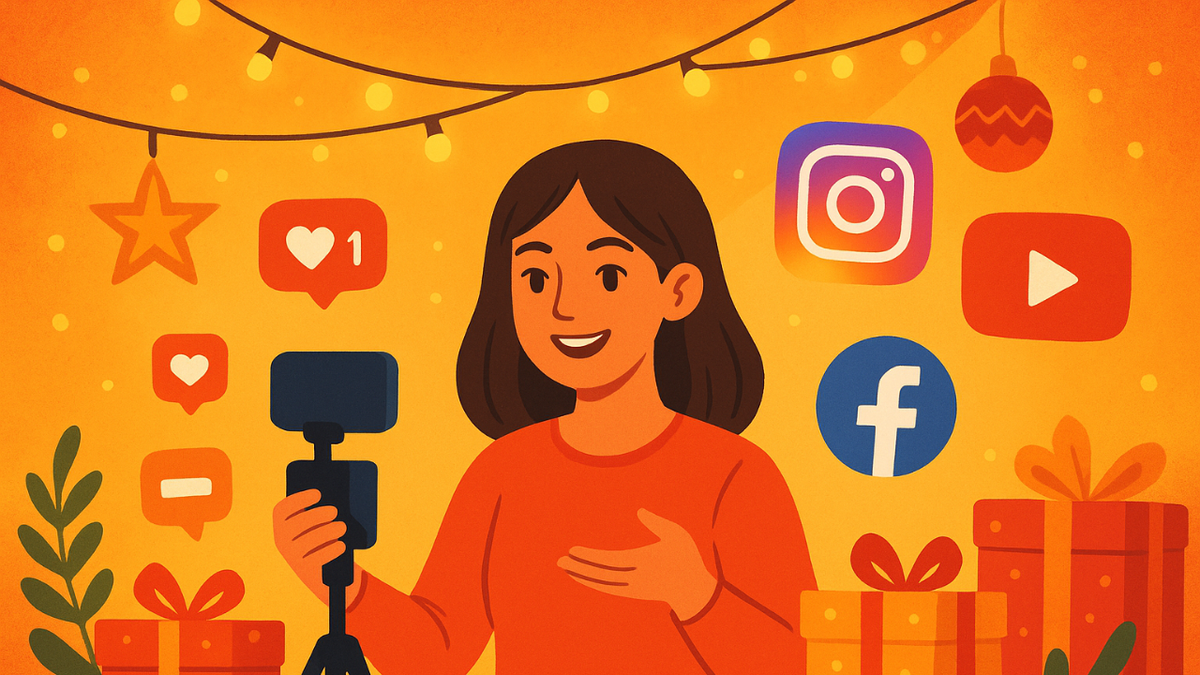Festive Season Turns Into Creator Season
Scrolling through Instagram during the festive rush feels less like casual browsing and more like a shopping festival. From home décor hacks to festive fashion styling, influencers have become the go-to source for inspiration, discovery, and even final purchase decisions. According to the India Influencer Marketing Report 2025, nearly 63 percent of Indian users rely on influencers for product discovery, and 60 percent make buying decisions based on their recommendations.

It is no surprise then that brands are pouring resources into creator-led campaigns. This year, festive influencer marketing spend is projected to cross ₹700 crore, with overall influencer budgets tracking almost 20 percent higher than last year.
Who Is Spending The Most
Qoruz’s Festive Season Report 2025 highlights that brands are now allocating between 12 to 20 percent of their digital budgets to creators. The biggest spenders this year are consumer durables at nearly 30 percent, followed by fashion and beauty, FMCG, and e-commerce. Interestingly, fintech and auto brands are also stepping in, using influencers to make complex products like insurance and investments relatable.
Quick commerce, travel, and even gifting categories have joined the mix, expanding the scope of influencer-led campaigns beyond traditional sectors.

Micro And Regional Creators Take The Lead
While mega influencers still headline marquee campaigns, the real winners this season are micro and nano creators. Brands now value creators with 2,000 to 10,000 followers who drive authentic, conversion-focused engagement. Regional influencers in Tier II and Tier III cities are delivering up to 30 percent higher engagement than English-speaking metros, making them indispensable for festive campaigns.
ADVERTISEMENT
Industry experts note that 60 to 70 percent of incremental festive budgets are being directed toward these smaller creators, while marquee names are reserved for big-bang festival moments.

The Rise Of The Festive Rate Card
With demand spiking, influencer rate cards have surged by 15 to 30 percent. But brands are no longer paying for just reach. They are demanding ROI-linked campaigns, tying payouts to conversions, coupon code redemptions, or affiliate-driven sales. Campaigns are now being built in waves: pre-buzz seeding, decision week offers, and last-minute urgency pushes.
Agencies are also creating blended festive packages that combine different tiers of influencers, ensuring reach, relevance, and measurable outcomes.
Balancing Authenticity With Commercial Goals
For creators, the festive season brings both opportunity and responsibility. Influencers like Esha Shetty and Meghna Kaur stress the importance of blending branded posts with organic content to maintain credibility and avoid audience fatigue. Selective partnerships and story-led content help retain authenticity while still tapping into lucrative festive deals.
Beauty, lifestyle, fashion, home décor, and gifting categories are driving the bulk of partnerships, with luxury brands and global names like Estée Lauder, YSL, L’Oréal, H&M, and Marks & Spencer leading the charge.
ADVERTISEMENT

Turning Influence Into Sales
Data from the last festive season shows that nearly 28 percent of product page visits came directly from influencer links, bypassing search engines. This year, the adoption of live commerce, affiliate models, and “shop now” features are turning influencer campaigns into full-funnel sales engines.
As the festive season of 2025 unfolds, influencer marketing has evolved from a brand visibility tool into a performance-driven ecosystem. With ₹700 crore at stake, creators have become central to festive campaigns, bridging cultural authenticity with measurable business outcomes.
Stay ahead of the biggest marketing shifts and festive trends. Follow Marketing Moves on Instagram and Facebook for more.
















